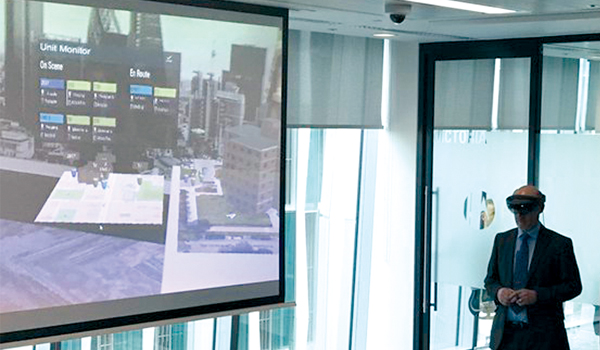Avoiding data isolation
Jamie Wilson explains why body-worn video cameras may be the tipping-point in changing the old-world view of digital evidence data silos.

A month before the Home Office mandate for digital evidence compliance comes into effect, at the end of April 2016, the Metropolitan Police Service (MPS) will have completed its roll-out of body worn video (BWV) cameras to 20,000 police officers.
The plans were announced by Mayor of London Boris Johnson following a trial of the technology by the force, which began in May 2014.
BWV cameras have become an increasingly common sight in recent years, as the price for these devices has fallen and the quality massively improved, with 4K resolution on the very latest models. For example, a number of security teams at football stadiums around the UK have embraced the technology to help them capture incidents of anti-social behaviour and racism, enabling them to capture high-definition video and audio that could otherwise be missed by surveillance cameras, helping them to provide the police with evidence to improve convictions.
For football stadiums with relatively small security teams and match days limited to every other Saturday, the issue of downloading, storing and managing the masses of data from these cameras is not a major problem.
However, scale up to 20,000 devices that the MPS will be handling and it has the potential to be a drain on already strained resources.
Of course, handling digital video content is not something new. As MPS Commissioner Sir Bernard Hogan-Howe said recently to the BBC: For too long our equipment has lagged behind the technology almost everyone has in their pockets to capture events as they unfold.
Every major incident is likely to have many eye-witness accounts captured on mobile devices. Meanwhile, CCTV surveillance technology has been digital for many years.
The challenge is how BWV camera data can be best managed.
There is a real risk that for perceived ease of management, BWV could end up being yet another silo of information. Yes, this makes it easy to store data, but the purpose of the information is for it be used effectively.
Holding it in isolation will inevitably slow down the investigative and disclosure management process, as investigators are burdened with doing all the leg work to trawl through masses of data to connect the dots.
So, it is perhaps no coincidence that the timeframe for the MPS deployment is aligned with the need for forces in England and Wales to be digital evidence compliant in order to meet the requirements of the Crown Prosecution Service and the courts. Since the mandate was published, many forces have been taking a close look at how they manage digital content and, crucially, how they can break down these silos.
One approach that is generating a lot of excitement is the ability to create digital case files into which all data relevant to an investigation (from content sources such as computer aided dispatch, records management systems, in-car video systems, city-owned and private video surveillance systems, interview room systems, crime scene photo databases and, of course, BWV camera video and audio) can be securely logged, stored, managed for disclosure and made readily accessible to those with the authority to do so, and can be easily shared as evidence.
Jamie Wilson is responsible for public safety marketing for NICE Systems throughout EMEA. He has worked in the public safety and security industries for more than 15 years, with a focus on diverse solutions designed to improve public safety, security and operational efficiency.


